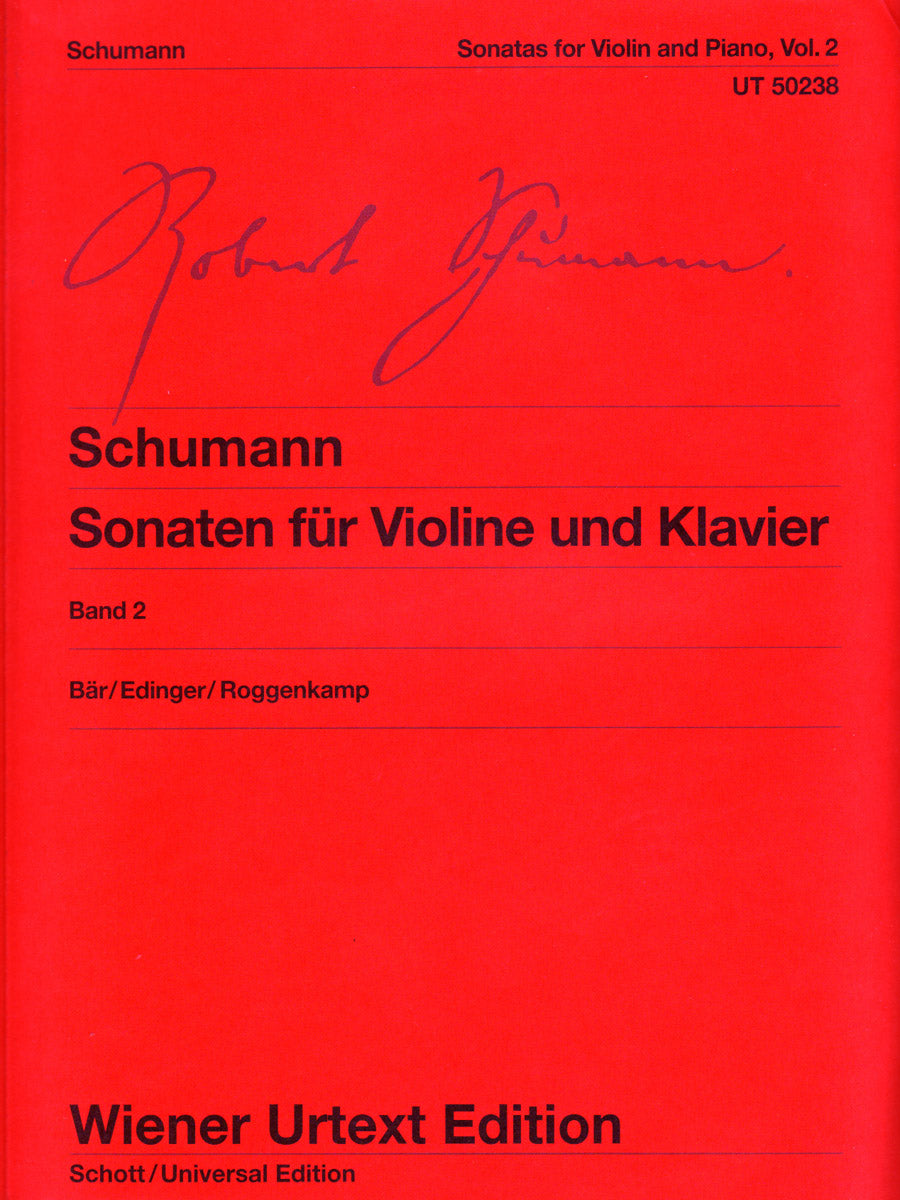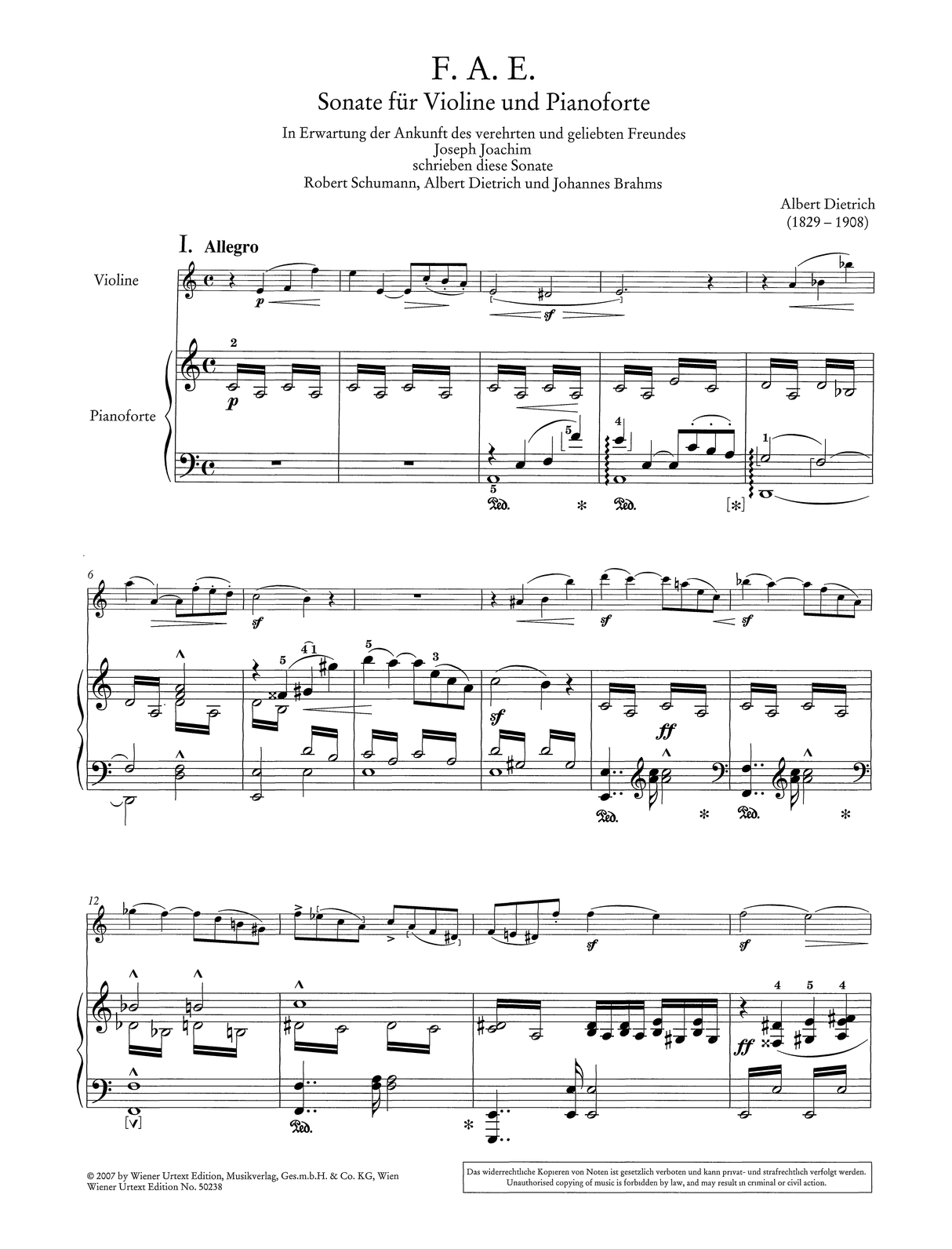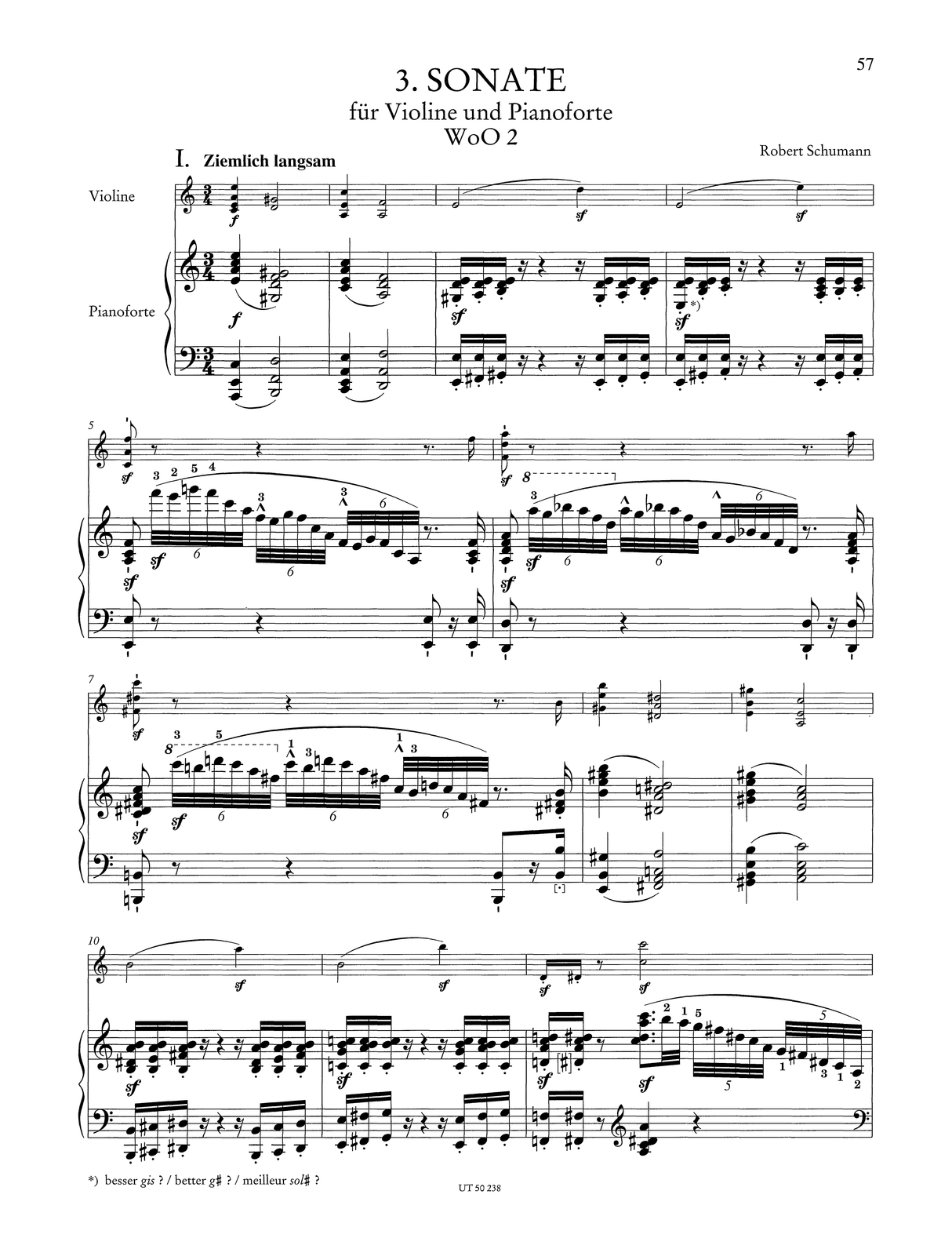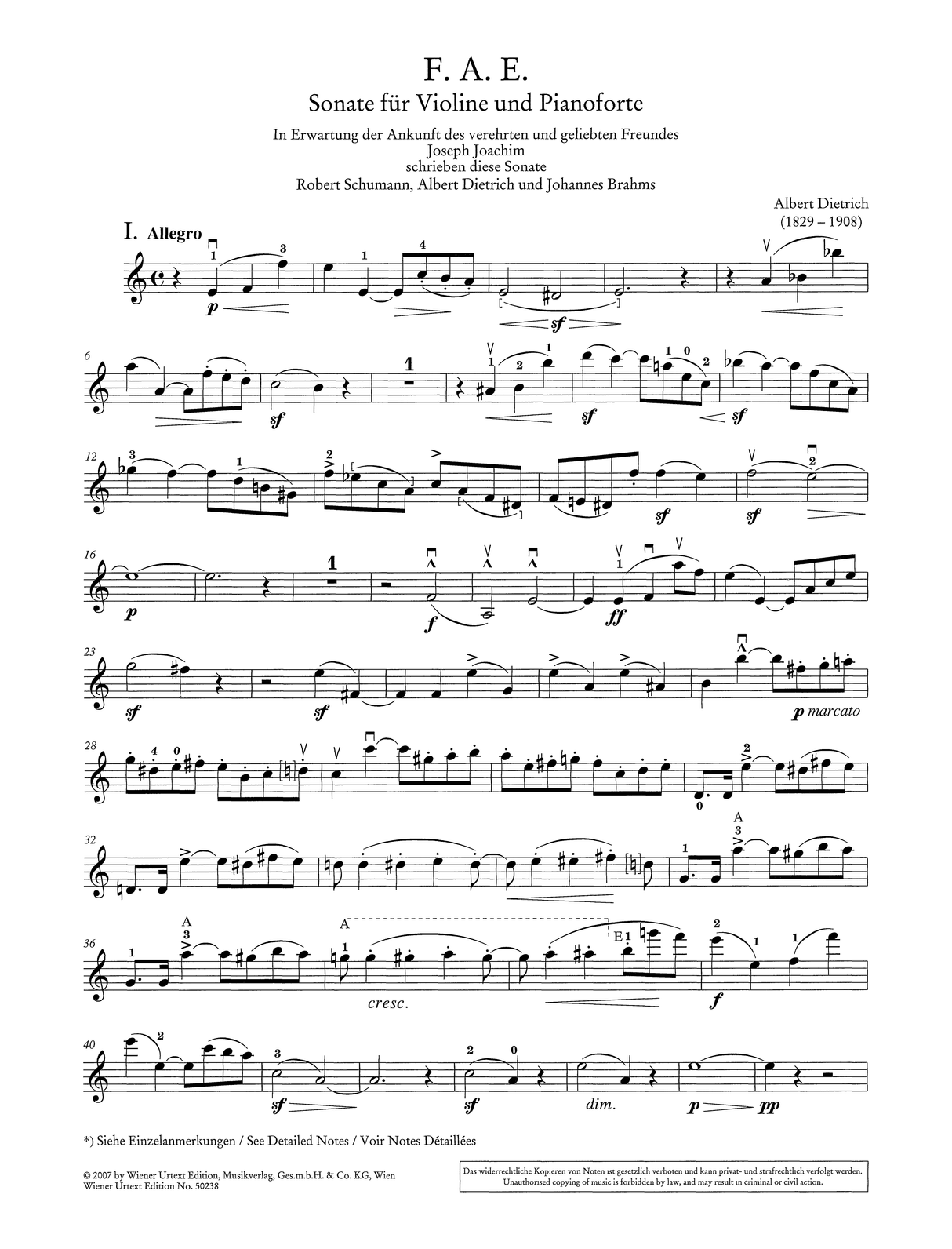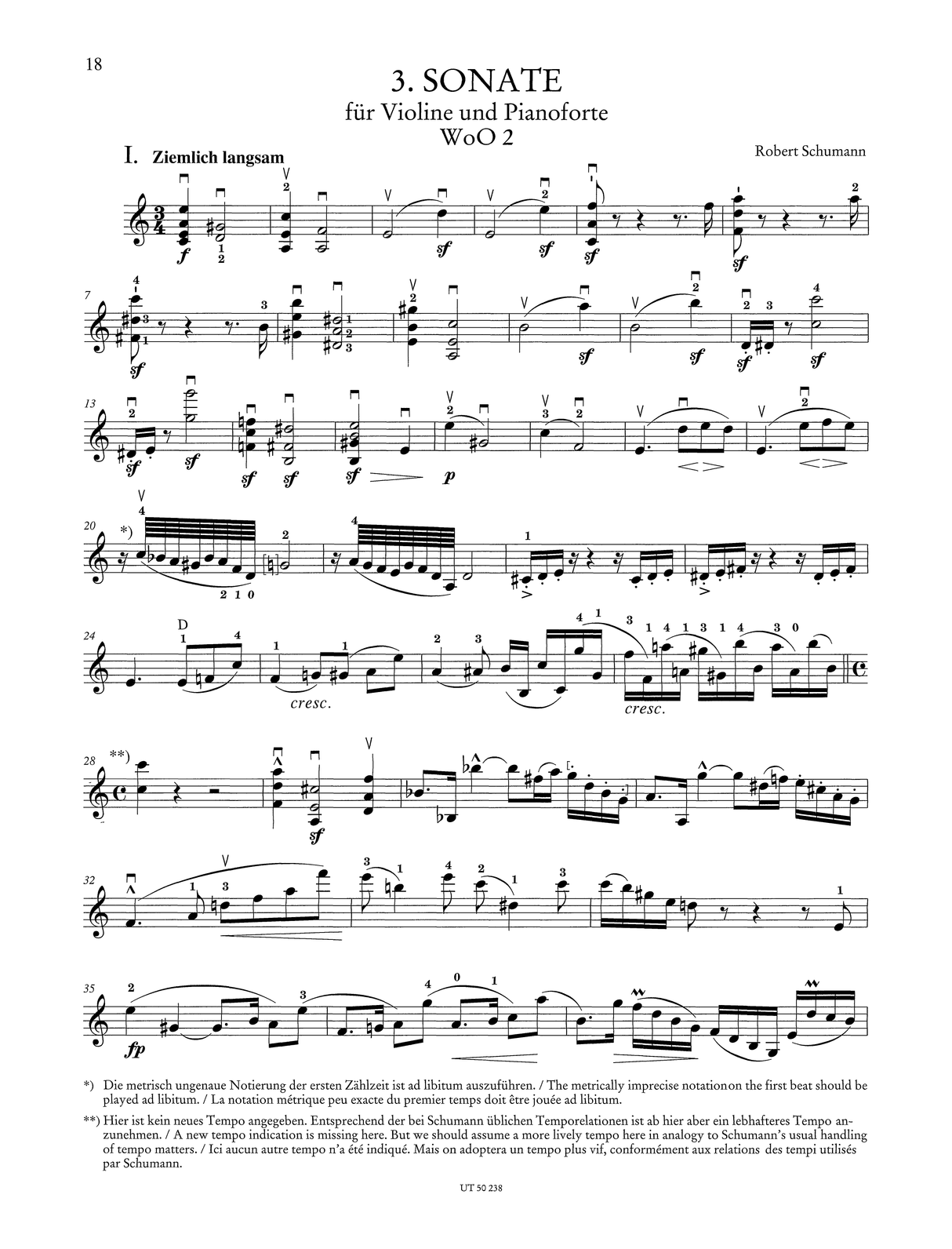Schumann: Violin Sonatas - Volume 2
Expected to ship in 1-2 weeks.
- Composer: Robert Schumann (1810-1856)
- Instrumentation: Piano, Violin
- ISMN:
- Size: 9.1 x 11.9 inches
- Urtext / Critical Edition
Description
This edition presents the F.A.E. sonata jointly composed by Schumann, Brahms and Albert Dietrich, as well as the edited version, with the movements of Brahms and Dietrich being replaced, as third violin sonata of Robert Schumann. The present edition is based on the edition published in 2002 in the New Schumann Complete Edition and thus on the latest musicological findings. In the case of the F.A.E. sonata, this is mainly a matter of slight changes in the fields of dynamics and articulation. In the case of Schumann‘s third violin sonata, the present edition differs more significantly from the first edition published in 1956 and the slightly revised new edition of 1988. The order of the middle movements the accuracy of which could not be clearly determined up to now has been changed, compared to the earlier editions, because of newly found documents. In addition, the repetition of the first section of the middle part notated in the first edition before the last 13 bars, yet not intended by Schumann has been omitted. The repetition demanded by the composer, however, of the first eight bars before the beginning of the coda which is missing in hitherto publications has been added. Moreover, in contrast to the first edition, the new edition contains a variant for bar 100 in the first movement which was not written out in full by Schumann.
Works:
Publishers use a lot of words to describe what they sell, and we know it can be confusing. We've tried to be as clear as possible to make sure you get exactly what you are looking for. Below are descriptions of the terms that we use to describe the various formats that music often comes in.
Choral Score
A score for vocalists that only contains the vocal lines. The instrumental parts are not there for reference. Generally, cheaper than a vocal score and requires multiple copies for purchase.
Facsimile
Reproductions of the original hand-written scores from the composer.
Full Score
For ensemble music, this indicates that the edition contains all parts on a single system (there are not separate parts for each player). In larger ensembles, this is for the conductor.
Hardcover
Hardbound. Generally either linen-covered or half-leather.
Orchestral Parts
Similar to a wind set, this is a collection of parts. In the case of strings, the numbers listed are the number of copies included, though generally these are available individually (often with minimum quantities required).
Paperback
When publishers offer multiple bindings (e.g. hardcover) or study scores, this is the "standard" version. If you're planning to play the music, this is probably what you want.
Performance / Playing Score
A score of the music containing all parts on one system, intended for players to share. There are not separate parts for each player.
Set of Parts
For ensemble music, this indicates that there are separate individual parts for each player.
Solo Part with Piano Reduction
For solo pieces with orchestra, this is a version that contains a piano reduction of the orchestra parts. For piano pieces, two copies are typically needed for performance.
Study Score
A small (think choral size) copy of the complete score meant for studying, and not playing. They make great add-ons when learning concertos and small chamber works.
Vocal Score
A score prepared for vocalists that includes the piano/organ part or a reduction of the instrumental parts.
Wind Set
For orchestral music, this is a collection of wind and percussion parts. The specific quantities of each instrument are notated.
With Audio
In addition to the printed music, the edition contains recordings of the pieces. This may be an included CD, or access to files on the internet.
With / Without Fingering (Markings)
Some publishers prepare two copies - a pure Urtext edition that includes no fingering (or bowing) suggestions and a lightly edited version that includes a minimal number of editorial markings.
